One Telling Number For All 30 NBA Teams

How do you measure success in the NBA? For the Utah Jazz, it may be utilizing Defensive Real Plus-Minus to illustrate how Rudy Gobert is one of the best centers in the league. For the Sacramento Kings, it may be simply counting the number of days since they fired their last head coach to prove they aren’t a complete trainwreck. Ultimately, whatever method teams use to evaluate their progress, it’s often difficult to boil down that evaluation into one number.
Here at The Crossover, however, our writers accept the challenge. Armed with nothing but calculators, the internet and vast data resources (okay, so a good amount of arms), SI NBA's staff has attempted to give you the most important number for each team this season. What are the most important facts and figures around the league as the season approaches? Here’s what we think you need to know.
Reporting done by Ben Golliver, Rob Mahoney, Andrew Sharp and Rohan Nadkarni.
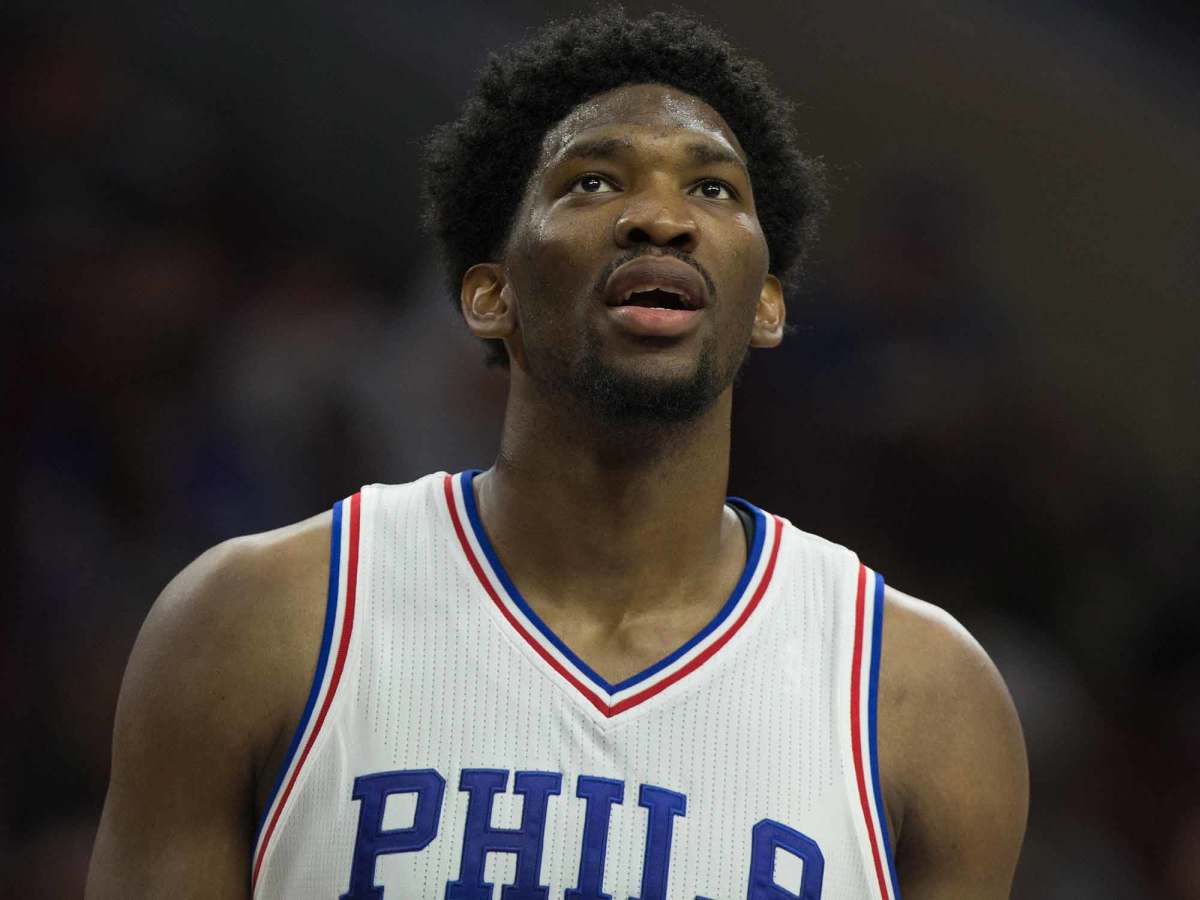
Atlantic Division
Philadelphia 76ers: 948
Joel Embiid finally arrived. The No. 3 pick of the 2014 draft suited up for the 76ers on Oct. 4, Embiid’s first basketball game in 948 days, since he was at Kansas. Not only did the 7-foot Embiid play, but he also played well, showing that his skills didn’t erode while he was sidelined with foot injuries. But just as Embiid came back, another young star exited in Philadelphia: Top pick Ben Simmons suffered a Jones fracture in his right foot and isn’t likely to see the court for several months.
As welcome as Embiid’s return is, it does create one problem: Even with Simmons out, Philadelphia has a glut of highly touted (and highly drafted) big men. Nerlens Noel, 22, is a defensive presence off the bench, but his lack of shooting should rule him out as a power forward. Jahlil Okafor, 21, is a poor defender but an elite low-post scorer, which might make him the most likely big man to be moved. And rookie Dario Šarić, 22, has shown the potential to be a solid stretch four.
Before making a move, the Sixers can allow coach Brett Brown to try different frontcourt combinations in what will no doubt be another losing season. But if the 22-year-old Embiid stays healthy—and continues to flash the talent that made him such an exciting prospect—they can call 2016–17 a qualified success. — R.N.
Boston Celtics: 34.6%
They have a young, defensively tenacious team that seems tailor-made for the modern NBA. The only problem? They struggle to make shots. Boston hit just 34.6% of its catch-and-shoot threes last season, second-worst behind the hapless Lakers. Simply put, the Celtics have a bunch of three-and-D guys who haven’t quite grasped the three part yet.
The biggest improvements need to come from Jae Crowder and Marcus Smart. The 6' 6" Crowder shot 33.6% from deep, which means he’s close to becoming a reliable stretch option. He’s otherwise skilled on offense and so good defensively that a three-point stroke would likely make him an All-Star. Smart is arguably the team’s best defender behind Avery Bradley, but he shot a ghastly 25.3% from beyond the arc last year.
Bradley can serve as a model for his teammates. He’s increased his volume of outside shots in each of his six seasons and for the most part has maintained his efficiency, putting up a solid 36.0% career mark. If Crowder can be that accurate and Smart can surpass 30%, Boston could have an offense to match its top five defense. And that would put the defending champs on notice. — R.N.
New York Knicks: –4.27
By most measures, Derrick Rose was one of the worst players at his position last season. Rose’s –4.27 real plus-minus ranked 74th of 77 qualifying point guards (meaning that his play cost the Bulls 4.27 points per 100 possessions last year). He was especially bad at the defensive end, which is troubling for the Knicks, whose anchor—an aging, oft-injured Joakim Noah—will need all the help he can get.
Offensively, Rose was a detriment too, but he had an uptick in efficiency in the second half as he recovered from vision problems. If that emboldens him to gun more, New York—which will also put Carmelo Anthony in a fair number of isos—could be looking at a lot of empty possessions this season. All of which raises the question: Will Kristaps Porzingis get the ball enough?
The 7' 3" forward from Latvia was a revelation last season, stretching the floor, dunking, blocking shots and offering a real ray of hope at Madison Square Garden. But the Knicks are holding on to playoff pipe dreams instead of committing to a rebuild. How do Rose and Noah (and an aging Melo) help Porzingis? They don’t. At least Rose’s contract lasts only one more season; Noah is locked in for four years and $72 million. — R.N.
Brooklyn Nets: $124.8 million
They signed shooting guards Tyler Johnson and Allen Crabbe to offer sheets worth $124.8 million this summer. They ended up actually spending $0 on the pair after the Heat and the Blazers, respectively, matched the deals. This is the daunting task for the Nets’ new general manager, Sean Marks: He must rebuild a lottery-bound team with no lottery picks. (The Nets don’t control their top pick until 2019.) So he went the free-agent route, had to overbid for two unproven players—and still couldn’t reel them in.
Marks is paying for the mistakes of previous regimes, and he’s staring at perhaps the most difficult rebuild in NBA history. With Johnson and Crabbe, the Nets were looking to assemble a young, athletic team that could make some noise from the perimeter. Instead, Marks focused on bringing in veterans, including Jeremy Lin and Randy Foye, on small and sensible deals. Lin, who will start at point guard, had a solid season for the Hornets and showed improvement defensively.
Marks, 41, cut his teeth in the Spurs’ front office and is the right person to lead the long climb back to relevance. But he learned a hard lesson this summer: Money alone can’t begin to fix Brooklyn’s problems. — R.N.
Toronto Raptors: 39.3%
They have probably been surpassed by Boston in the Atlantic Division, but the Raptors will still be contenders to reach the Eastern finals. That will only happen, though, if Toronto gets improved play from its stars during the playoffs. In 31 postseason games, DeMar DeRozan has shot 39.3%. That’s simply not good enough, especially from a player who signed a five-year, $139 million deal in July. Still, his accuracy is better than that of his backcourtmate, Kyle Lowry, who is a 38.3% shooter in 44 playoff games.
Teams can too often make Toronto’s offense disappear, exploiting DeRozan’s lack of range—he made just four threes last postseason—and tightening their grip on Lowry in the paint. To reach the conference finals last year the Raptors needed 14 games to advance past the seventh-seeded Pacers and injury-laden Heat.
Improved play from Jonas Valanciunas would help, particularly if he commands more attention in the post. The addition of Jared Sullinger also gives coach Dwane Casey the opportunity to try out some spacier lineups.
Lowry and DeRozan can succeed on a big stage—they both won Olympic gold over the summer. If they want a shot at any NBA hardware, they’ll have to step up when it matters most. — R.N.
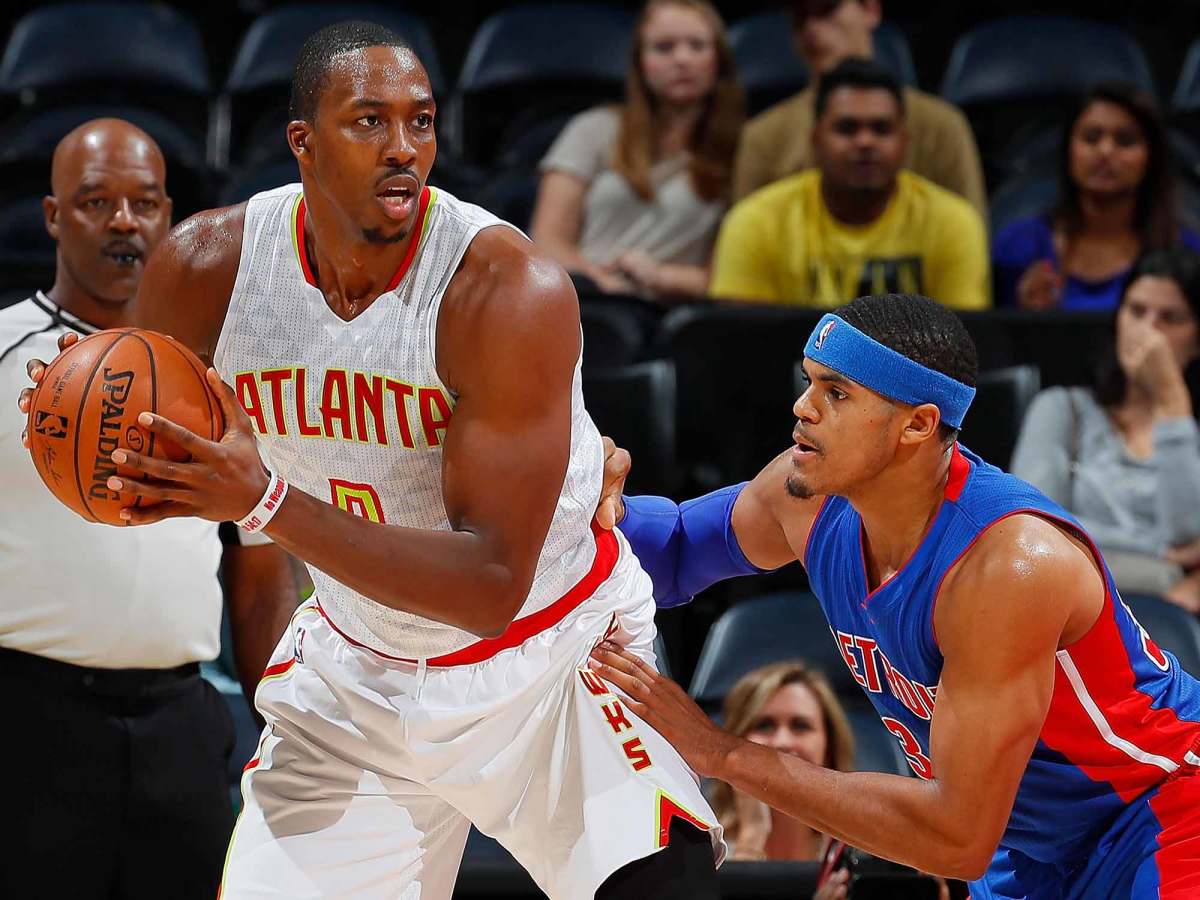
Southeast Division
Atlanta Hawks: 6.1
Coach Mike Budenholzer has a strong aversion to low-post play. Atlanta had just 6.1 post-up possessions per game last season, fifth-fewest in the NBA. And many of those happened accidentally: Paul Millsap backing down an undersized opponent, or Al Horford putting up a hook shot off a deep catch. There were seldom any programmed post operations—the sort of offense that new center Dwight Howard has come to depend on.
Coaches who’ve failed to indulge Howard’s desire for paint touches have risked his becoming less engaged. That was especially true in Houston, where his field goal attempts dwindled in each of the last three seasons—down to 8.5 per game in 2015–16—and his effectiveness declined.
Style changes are inevitable for a team transitioning from Horford, who left for Boston, to Howard, 30, who signed a three-year, $75 million deal. But it’s hard to imagine that Budenholzer, who prefers to string multiple actions into a fluid offense, will compromise and feature Howard in the post. Still, it might be worth it for the Hawks to appease the big man with some rolls to the rim and dribble handoffs. Even with his back problems, a motivated Howard can be a vital interior defender, rebounder and finisher. — R.M.
Miami Heat: 1
LeBron James returned home, Dwyane Wade left his adopted city, and Chris Bosh found himself effectively barred from the team he thought had become his. So ends the Big Three era in Miami—one of the glitziest intersections of talent in NBA history. Only one player from the Heat’s two title teams is likely to play for them this season: deep reserve Udonis Haslem.
Everything in the league changes; almost everyone moves on. Bosh’s departure, though, is particularly sad and cruel. Because of blood clots that have put the remainder of his career in serious jeopardy, Miami effectively cut ties with the 11-time All-Star big man. (He believes he can still play and says he intends to.) That this came so soon after Wade’s surprising exit for Chicago has thrust the Heat into a sudden transition. Their fate now precariously lies with Goran Dragic, Hassan Whiteside and Justise Winslow—none of whom is a particularly convincing franchise player.
Of that trio, the 27-year-old Whiteside is the most capable—and the most unpredictable. Relying on such a player is dangerous given how the roster has been stripped down—not only of its talent, but also its leadership and experience. — R.M.
Russell Westbrook: 'I Was Never Going To Leave'
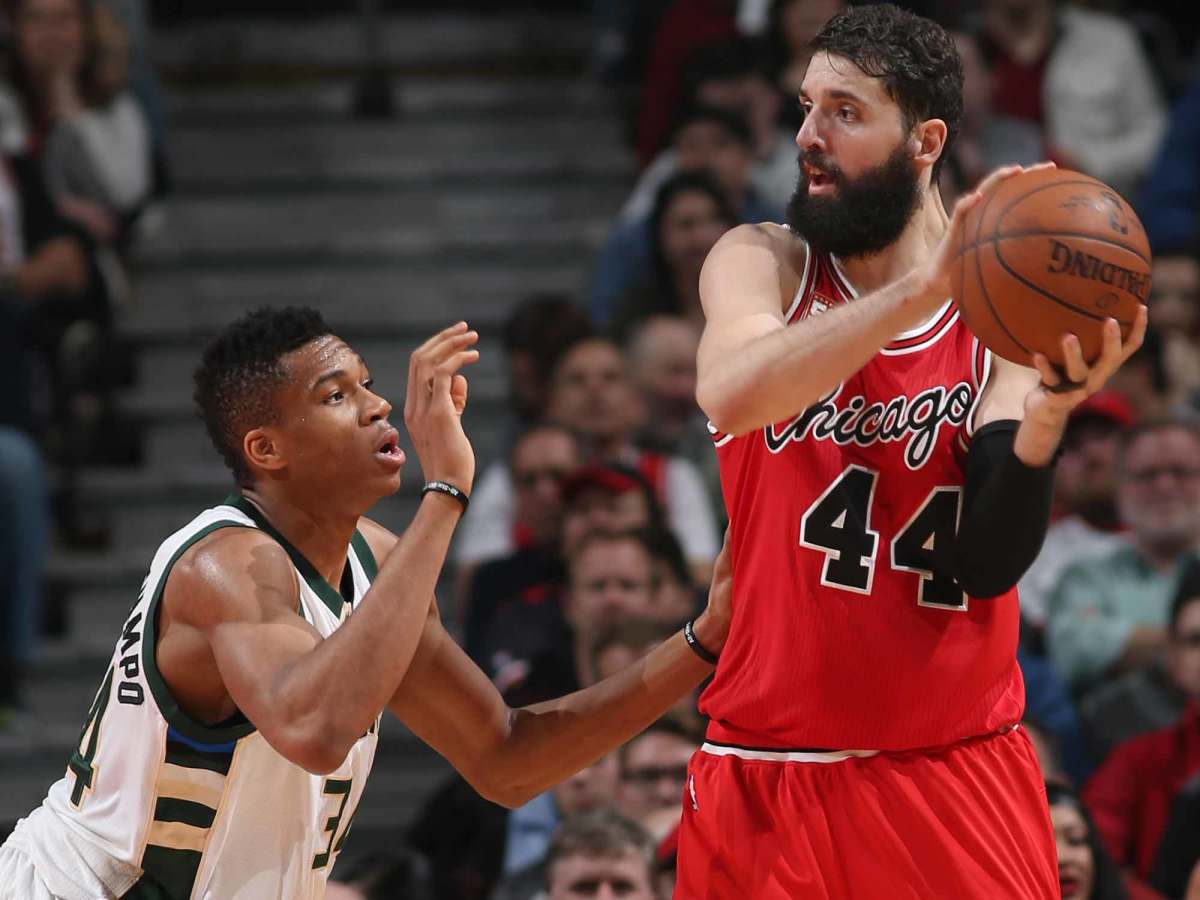
They have bigger names than Nikola Mirotic. Dwyane Wade is a future Hall of Famer, Jimmy Butler is a perennial All-Star, and Rajon Rondo is one of the most perplexing NBA stars of the past decade. Throwing those three into the same backcourt mix may lead to wildly divergent results from night to night.
Will the stars work together? Can anyone shoot? Will second-year coach Fred Hoiberg have a breakdown by February? All relevant questions that have been asked since July in Chicago.
But for this year and beyond, the player who holds the key to those answers is the 6' 10" Mirotic, a third-year forward.
His shooting ability creates space on the floor, which the Bulls will badly need. The only uncertainty is the consistency with which he connects. After an uneven rookie year in which he made 31.6% of his three-pointers but showed promise, he was supposed to be a breakout star last season. Mirotic proceeded to shoot just 30.4% from deep in November and December. But in March and April, Mirotic improved his accuracy to 44.5%. It was like watching two different players. If Mirotic can be closer to that second version, it will help the offense breathe—and make the Bulls much scarier this winter than they looked this summer. — A.S.
Indiana Pacers: 16.3, 8.7
They’ve overhauled their roster to supercharge the offense, which ranked 17th in the league last year. Defense-first George Hill has been replaced by Jeff Teague to add shooting from the point guard spot. Rim protector Ian Mahinmi has turned into low-post scorer Al Jefferson, and Thaddeus Young will bring firepower from the wing. On the bench, defensive guru Frank Vogel is now coaching in Orlando, and Nate McMillan will be in charge of overseeing the offensive renaissance.
The unstated goal was to improve enough to persuade Paul George to stay in Indianapolis in two years, when he can opt out of his contract. Some homegrown talent should help too. In a limited role as a rookie last season, Myles Turner averaged 16.3 points and 8.7 rebounds per 36 minutes. Now Indiana will need his size and shot blocking to anchor the defense, giving the 6' 11" Turner a chance to turn into a full-fledged star.
As his playing time increases (he averaged just 22.8 minutes in 2015–16), Turner will also be able to show more of his low-post and midrange games. If he blossoms, the 20-year-old can raise the team’s ceiling this season—and, if he’s good enough to be a running mate for George, make an even bigger impact down the line. — A.S.
Milwaukee Bucks: 18.9
Giannis Antetokounmpo was the talk of the NBA after the All-Star break. That’s when Jason Kidd moved him to point guard, where at 6' 11", he averaged 18.8 points, 8.6 rebounds, 7.2 assists and 1.9 blocks. (In September, he signed a four-year, $100 million contract.)
But if the Greek Freak is officially the team’s cornerstone, then 2014 No. 2 pick Jabari Parker showed he is a substantial building block. As he recovered from a left-ACL injury that cut his rookie season short, the 6' 8" forward also blossomed after the All-Star break: Parker lifted his average from 11.3 points to 18.9, giving Milwaukee a legitimate offensive threat on the wing.
Parker’s scoring spiked as his stroke became more reliable. As he continues to build his game out to the perimeter, he can become an übersmooth throwback scorer next to the Bucks’ futuristic point forward.
Milwaukee will struggle without the shooting of Khris Middleton, who is out until at least the All-Star break with a torn left hamstring. Making the playoffs will be tricky. Antetokounmpo will undoubtedly be a bright spot, and if Parker can grow alongside him, it won’t matter that the present is complicated. The future is bright. — A.S.
Cleveland Cavaliers: 25.2
As long as the Cavs have LeBron James, the baseline expectation is that they reach the Finals. But it was Kyrie Irving who surprised the world against the Warriors last June. He outplayed Steph Curry for two weeks. He exploded for 41 points in Game 5 to help turn the Finals upside down. He finished off Game 7 with a pull-up three over Curry to win the title. All told, Irving scored 25.2 points per game in the playoffs. What if that was just the beginning?
James came back to Cleveland in the summer of 2014 for myriad reasons, but Irving’s presence was near the top of the list. At the time, Irving was 22 and an All-Star, but he had plenty of room to grow. At 24 he still does. Last spring was a level we’d never seen before from Irving—better shooting, perfectly picking his spots, bailing out Cleveland over and over again in the half-court.
LeBron—who just finished his 11th season of at least 2,700 minutes—will need help as he navigates the next six months. And come June he’ll need another superhero to have a shot against the Golden State Death Star. Irving played that role for two months. Let’s see if he can do it for a whole season. — A.S.
Detroit Pistons: 35.5
The Pistons have a promising young nucleus—their top six players have an average age of 23.8—and with another year under Stan Van Gundy, they should be even better than last year’s 44-win team. But they also face two big questions.
The first concerns point guard. Reggie Jackson could miss up to two months with tendinitis in his left knee, leaving Detroit to count on above-average backup Ish Smith, 28, to run its spread pick-and-roll. Van Gundy’s smoke and mirrors can make decent players look twice as dangerous, but this will put his sorcery to the test.
The second question centers on the middle. Early last season Andre Drummond looked like a young Moses Malone, putting up 20-rebound games and throwing down thundering alley-oops. By year’s end, though, he tailed off. He wasn’t always engaged on defense. And Drummond was often too big a liability to even keep on the court, because his free throw percentage of 35.5% was the worst in NBA history.
When he met the media in July to announce his five-year, $130 million extension, the 23-year-old said he’d “found something that works.” The Pistons hope so: Drummond is their best player, but he’ll have to be more dependable for them to be able to hang with the East’s elite. — A.S.
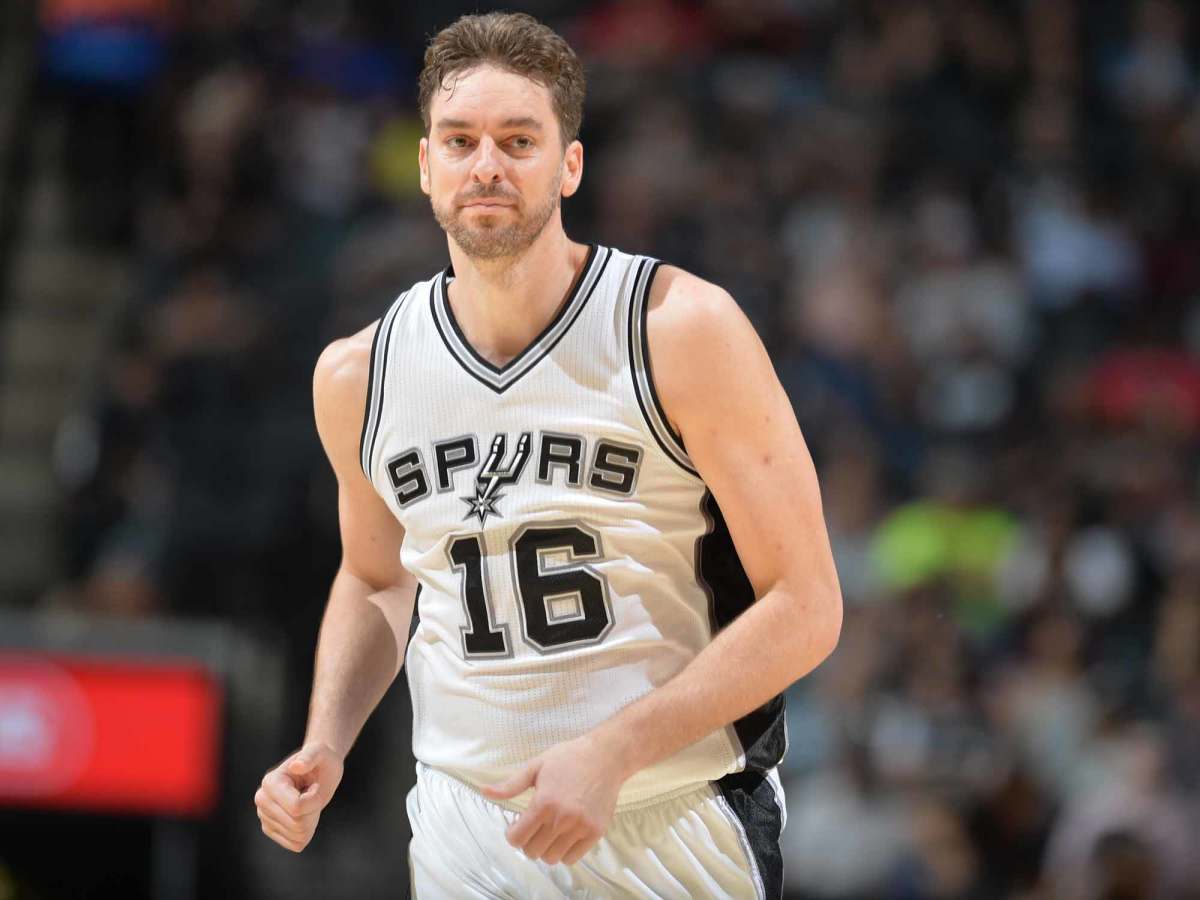
Of the eight players who took at least 100 three-pointers for the Pelicans last season, only two are with them to start the season: Anthony Davis and Dante Cunningham. Ryan Anderson and Eric Gordon, their most prolific shooters, are gone. (When Jrue Holiday will return is unclear.)
Those six absent players combined to make 489 threes, or 69.7% of the team’s total. New forward Lance Stephenson hit 38.5% of his treys in 2015–16—but only 17.1% the season before. Terrence Jones isn’t realistically a stretch four. Only Langston Galloway is serviceable from deep—but he’s awful from everywhere else. So the Pels’ shooting hopes rest on their first-round pick from Oklahoma, Buddy Hield.
They shouldn’t have so much trouble scoring with a game-wrecker like Anthony Davis, whose overall play suffered last year from the increased load he shouldered on defense. The departures of Anderson and Gordon will help at that end. But unless Gentry can figure out how to space the floor for his best player, New Orleans will be hard-pressed to improve last year’s 18th-ranked offense. Davis—who entered last season 3 of 27 from three but then knocked down 35 of 108—shouldn’t have to carry the burden from the perimeter, too. — R.N.
Memphis Grizzlies: 28
How rampant were injuries in Memphis last season? The Grizzlies suited up 28 players, an NBA record—almost enough to fill two rosters. Simply put, the Grizz need good health above all this season.
The player whose well-being will be most important is Marc Gasol. The 7' 1", 255-pound center appeared in only 52 games in 2015–16 but still finished third on the team in total minutes, a sign of just how bad things were. Gasol is one of the best centers in the league when healthy, combining a feathery jumper with physical D on the block.
Under rookie coach David Fizdale, Gasol, a gifted passer, can also help facilitate a more modern offense. Fizdale, 42, is a disciple of Erik Spoelstra, who’s a staunch believer in spreading the floor. This year the Grizzlies—who ranked 27th in threes made—may finally have the roster to do just that. They acquired youngsters Troy Daniels (a career 43.0% shooter from three) and James Ennis (37.3%), but the real difference maker will be Chandler Parsons, who signed a four‑year, $94 million free-agent deal. Parsons, 27, can unlock all kinds of lineup flexibility for Fizdale—if his right-knee issues don’t act up. Needless to say, such concerns will be a recurring theme in Memphis. — R.N.
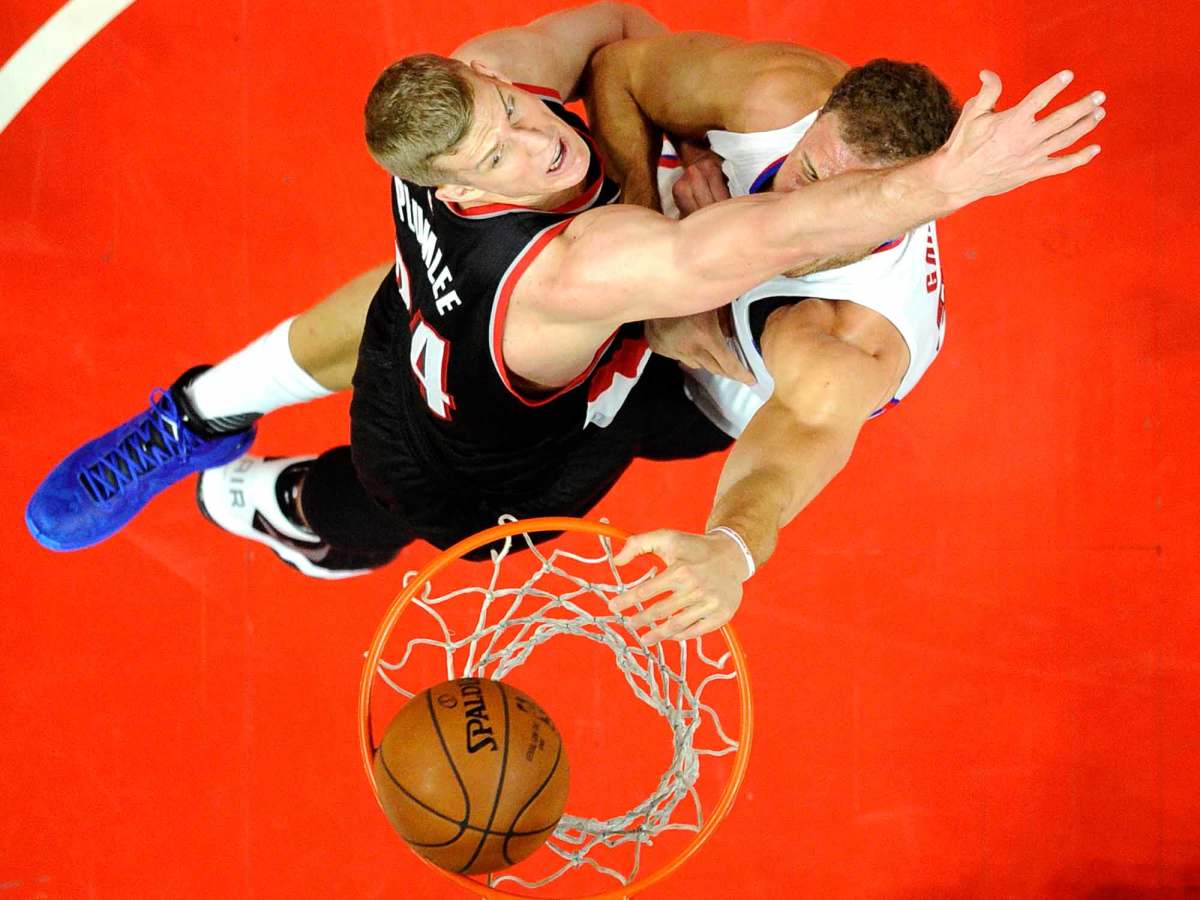
Despite playing for three teams in five seasons and logging time both on and off the ball, Brandon Knight has really only known one role: starter. The 24-year-old Knight has started 96.0% of his games, but he will shift from being the Man to being the sixth man under coach Earl Watson.
The Suns traded for Knight in February 2015, viewing him as a long-term partner for explosive guard Eric Bledsoe. Last year rookie Devin Booker emerged as Phoenix’s most promising long-term asset when both Knight and Bledsoe missed time with injuries. While starting the three ex-Kentucky guards together was an option, Watson decided to spread out his playmakers by demoting Knight to the second unit. The move showcases Booker, a star in the making, and gives Phoenix a bigger look in its starting lineup. Meanwhile, staggering Bledsoe and Knight ensures that the young Suns always have a steady hand on the court while also ensuring that Knight, who is at his best with the ball in his hands, is actively involved in the offense rather than standing and watching.
Knight took the news in stride, publicly praising Watson’s honesty, and the coach returned the favor by hailing Knight’s sacrifice. Nevertheless, the trade rumor mill immediately kicked into gear. — B.G.
Golden State Warriors: 115.6
The 1986–87 Lakers, directed so brilliantly by Magic Johnson, have stood as the gold standard for devastating offense. But the Showtime Lakers’ 115.6 offensive rating—a modern record—is in serious jeopardy thanks to Kevin Durant’s arrival in the Bay Area. Last season Steph Curry guided the Warriors to a franchise-best 114.5 offensive rating, the 12th highest in the three-point era.
Golden State’s rating should only climb in 2016–17 now that Curry has been paired with Durant to form the most potent duo since Shaquille O’Neal and Kobe Bryant. The Warriors’ new supertandem has combined to win the last three MVP awards and five of the last seven scoring titles. Throw in Klay Thompson, and coach Steve Kerr has three legitimate 50/40/90 shooting candidates in his starting lineup.
Durant shouldn’t be overly concerned about getting his touches. Under Kerr, Golden State has led the league in assist rate for the last two seasons—while the ball-stopping Thunder never ranked higher than 15th during Durant’s nine seasons. “There’s a lot I need to learn,” Durant said this month. “I’m not as smart as I thought I was about the game. It’s played a different way here.” — B.G.
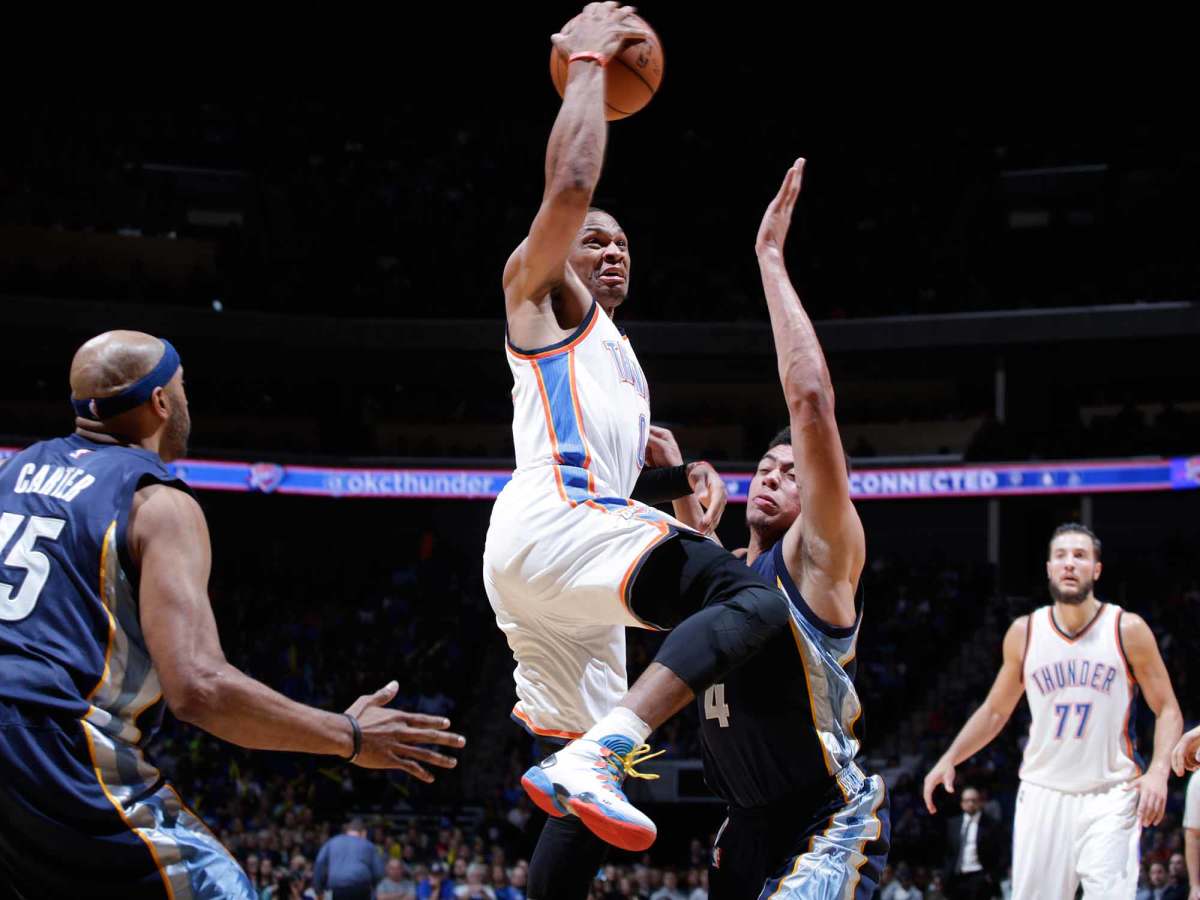
Compared with last season, when the team was one of the NBA’s most pleasant surprises, the Trail Blazers are paying 131.3% more in active contracts, according to Spotrac. Over the summer Portland loosened the purse strings to retain Allen Crabbe (four years, $75 million), Meyers Leonard (four years, $41 million) and Moe Harkless (four years, $40 million). The Blazers also signed Evan Turner to a four-year, $70 million deal. Those investments have pushed the active payroll, which was ranked 29th in the league last year, into the top five.
Will that money buy a title contender? That’s unclear. Retaining Crabbe and Harkless at least made sense in terms of continuity, but handing the hefty deal to Turner—who can’t really shoot—could haunt Portland for years to come. And don’t forget that CJ McCollum’s four-year, $106 million extension kicks in next season. That further locks the Trail Blazers into this core.
There are certainly reasons to be optimistic. McCollum and Damian Lillard have proved themselves capable of shooting Portland to unexpected wins. But both have plenty of room to improve defensively. For now, the Blazers are paying premium bucks and are still a legit two-way star from serious contention. — R.N.
Utah Jazz: 84,484
The Jazz added three accomplished veterans in Boris Diaw, George Hill and Joe Johnson. Together, they’ve played 84,484 minutes in their careers. Nobody on Utah’s roster ended last season with as many as 14,000.
The new vets will provide a boost to the Jazz’s callow—though enviably talented—young core of Gordon Hayward, Derrick Favors, Rudy Gobert and Dante Exum. Hill gives them stability at point guard, allowing the 21-year-old Exum, who missed last season with a torn left ACL, to ease back into the rotation. A capable shooter with a long wingspan, Hill can be a role player on offense while seamlessly integrating himself into a swarming defense.
Johnson and Diaw give Utah flexibility in the frontcourt—not to mention loads of playoff experience. (The team has not been to the postseason since 2012.) Johnson can shoot from the outside and carry the offense for brief stretches. The crafty Diaw will help to match up with small-ball lineups on nights when Gobert is ineffective.
The Jazz enter the season with less hype than other young squads, but if Quin Snyder can find the right combinations with his deep roster, they’ll be a tough out every night. —R.N.
Denver Nuggets: $38.3 million
In 2011 the Nuggets became the rare team to jettison a superstar—Carmelo Anthony—and still improve. Now, though, they might want to consider the opposite approach while hoping for the same result. Denver has some intriguing pieces on friendly contracts: Danilo Gallinari, Kenneth Faried and Wilson Chandler will make a relatively paltry $38.3 million and they’re the team’s top three earners. It may be time to package some players for a big name.
GM Tim Connelly flirted with a megatrade last season, inquiring about the Clippers’ Blake Griffin. In Gary Harris and Nikola Jokić, the Nuggets have promising young players who could take their games to the next level by playing alongside a franchise centerpiece. And a team looking to unload a max player—maybe the Clips look to rebuild? Maybe Kevin Love’s Finals honeymoon ends?—could do worse than picking up some affordable rotation players with high upsides.
Outside of its transactional potential, the Nuggets’ roster should take a step forward this season, especially if Emmanuel Mudiay continues his hot three-point shooting from the final six weeks of last season, when he averaged 16.5 points. — R.N.
Minnesota Timberwolves: 38.9
In his second season with the Spurs, Tim Duncan averaged a combined 38.9 points, rebounds, assists, blocks and steals per game—a high bar that Karl-Anthony Towns could reach this year. Towns’s cumulative average was 33.2 in 2015–16, when he ran away with the Rookie of the Year award. Towns’s game isn’t a facsimile of Duncan’s–certainly not on defense—but his potential is through the roof. Towns is a legitimate 7-footer who is light on his feet, with a natural athleticism most big men can only dream of. He can anchor the offense on the block, as a pick-and-roll partner with Kris Dunn, and with his developing outside shot.
Towns’s defensive growth will benefit from the arrival of coach Tom Thibodeau. (That’s true of his teammates as well. The T-Wolves were 28th in defensive rating. Only one of Thibs’s five Bulls squads was worse than sixth.)
With an embarrassment of lottery riches—the top three scorers last season were all 21 or younger—Minnesota has the potential to become the NBA’s next It team. But if the Timberwolves are going to end their 12-year playoff drought—let alone make a splash—Towns will have to more closely emulate Duncan as a two-way force. — R.N.
